
Crochet is a fairly popular technique, with which many needlewomen create real masterpieces. If you decide to join this art, you, like with any other technique, you need to start with the basics. Learn the basics will help you the next master class. After mastering them you can proceed to create different knitted things with your own hands.
- Sliding loop
- Air loop
- Column without crochet
- Cushion with crochet
- Legend
Sliding loop
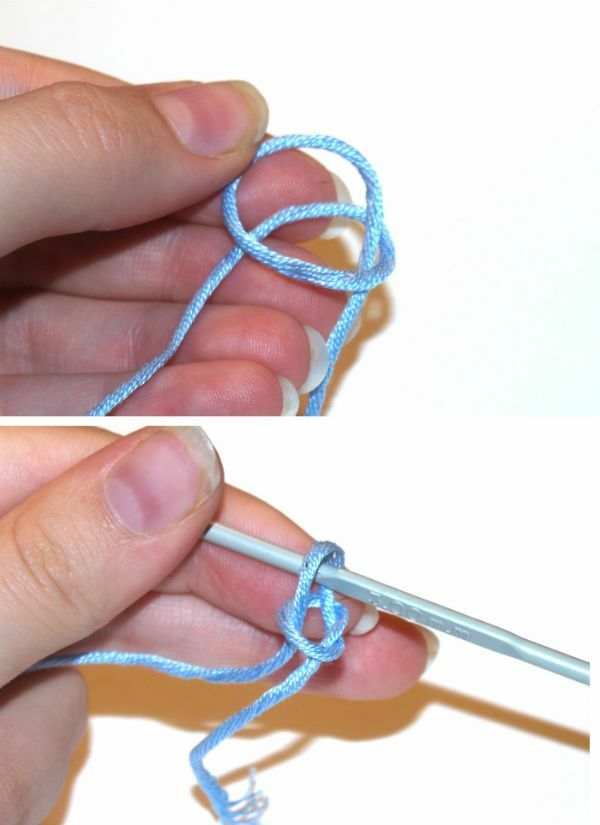
This loop is the basis of knitting, any product begins with it, it is the basis for all subsequent loops. It's quite easy to create it. See the pictures that will help you do this.
So, take the end of the yarn, as shown in the picture. If you are right-handed, then on the index finger of the left hand, if the left-hander, on the contrary. In the other hand, take the hook. Insert the instrument from above, between the index finger and the yarn, the hook itself must "look" upwards.
Now twist the yarn to form a loop.
You have to hold the end of the yarn between the forefinger and the thumb. Your middle finger, ring finger and little finger will help you hold the long end of the yarn.
After this, hook the yarn and pull it through the loop, make sure that the long end of the yarn is looped.
After that, it only remains to pull the thread to fix the loop on the knitting tool. Everything, you can proceed to create other loops. Note that in most cases this loop will be counted not as a starting one, but as one of the main ones. Consider this when tying loops.
to the table of contents ^Air loop
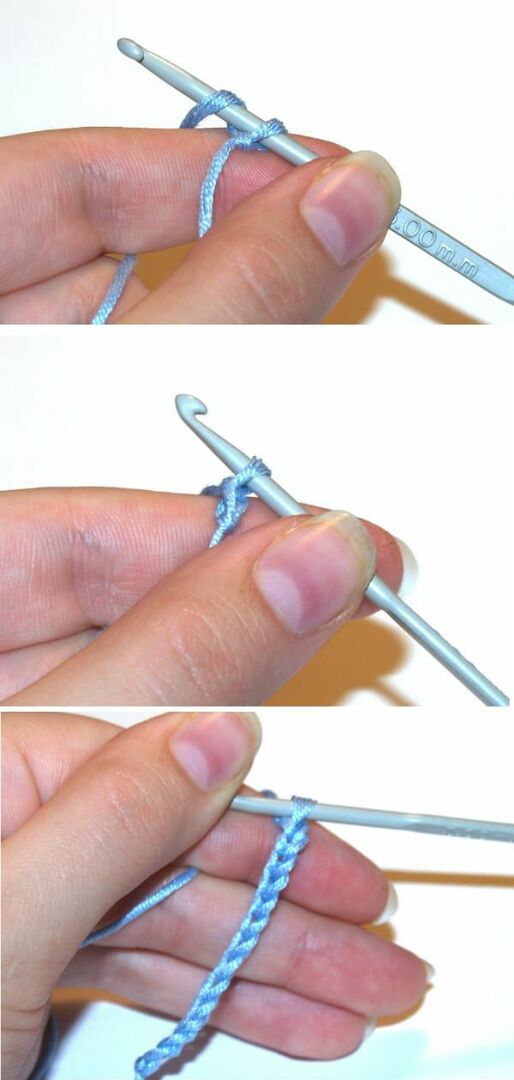
The air loop is the main loop in crochet. Without it, the creation of a single product is not complete. Typically, these loops are used to create the base of the product, as well as to connect the rows and the transition between them. That's why beginners need to start with these loops. Make them simple enough.
With free fingers of the left hand, hold the yarn so that you can easily grasp it with a tool. After you have captured the yarn, stretch it into a loop. The tool can be rotated up again, if it is convenient for you.
One air loop is ready, repeat until you get the desired number of loops. Note that for a successful and beautiful pattern, the loops should not be too tight or too loose, they should be even and neat.
to the table of contents ^Column without a crochet
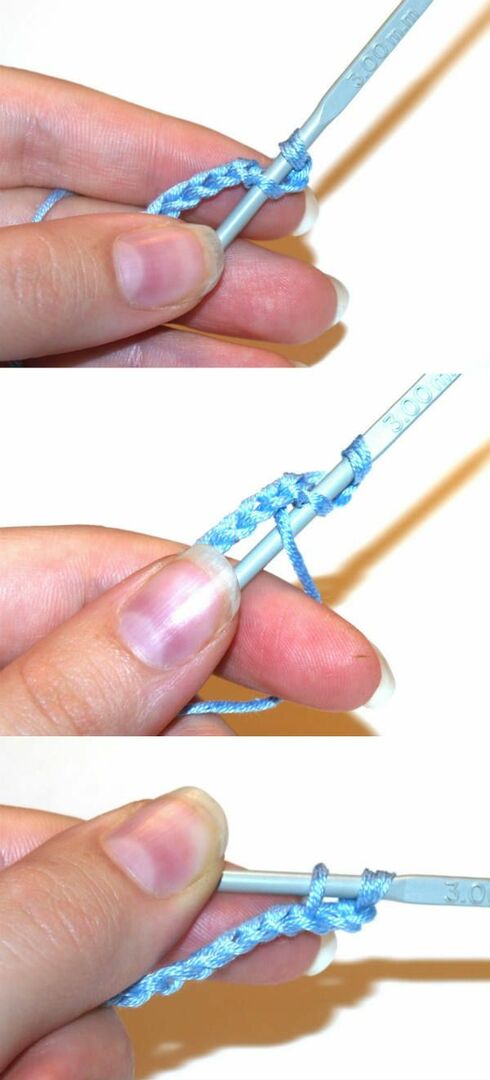
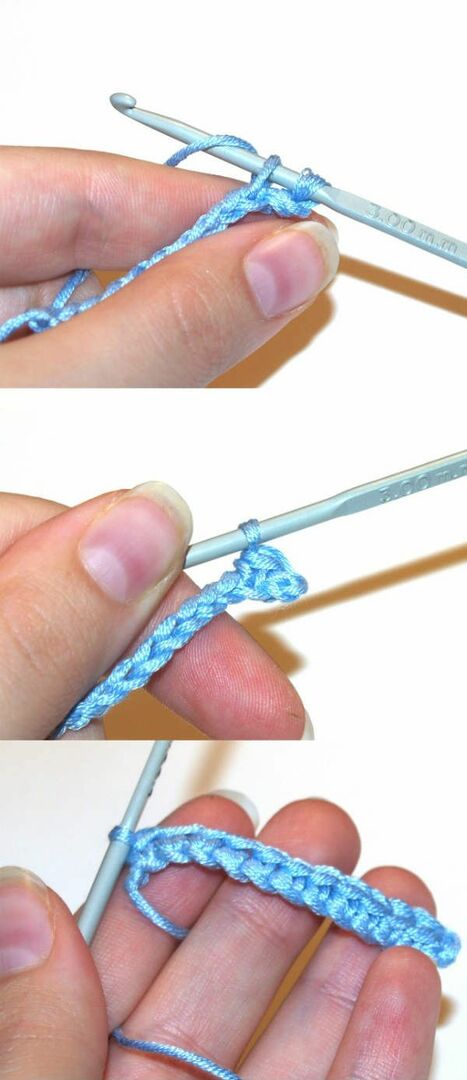
A bar without a crochet is one of the easiest loops you'll have to face. Most knitting patterns use this type of hinge, so if you do not master a column without a crochet, you will not be able to tie almost anything. Learning how to knit, you will find him a lot of applications.
Having connected a basis, it is possible to pass to creation of a direct pattern. Insert the hook into the loop and start knitting. Place the yarn on the tool and pull into the loop. Now you have two loops on the instrument.
Again, thread the yarn on the tool and again pull it into the loop.
To finish the knitting without a crochet, stretch the yarn through both hinges. The instrument will remain one loop, from which you can go to another type of stitch.
to the table of contents ^Column with a crochet
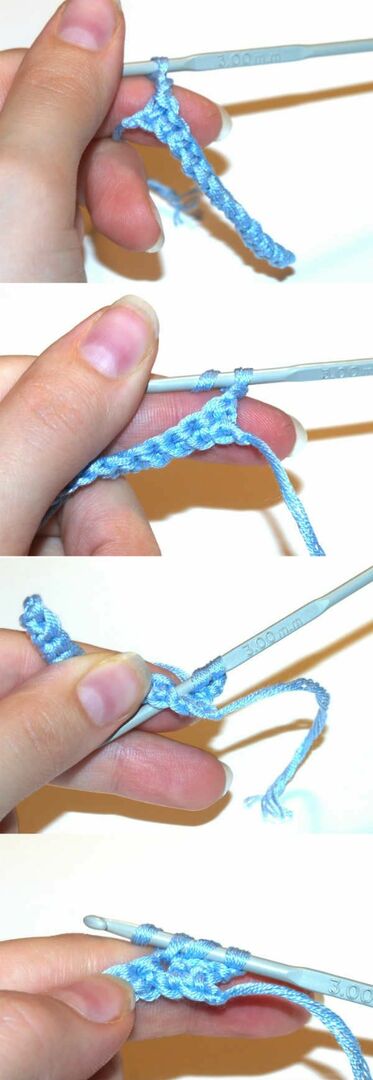
This loop is also one of the main, so it also needs to be read. You can find a lot of patterns in which a column without a crochet is not used, but if you decide to take this skill seriously, you need to get acquainted with this type of loops.
With a tool in the loop, wrap the yarn over it. Insert the tool in the place where you want to tie a column with a crochet.
Insert the hook between the two hinges as shown, then grasp the yarn with the tool.
Stretch into the loop. Now you have got three loops on the instrument. Put the yarn on the tool again, pull it through the hinges. Then from the remaining two loops make one. Continue knitting in the same way to get such a beautiful pattern.
Using the basic hinges, the creation of which is described above, you can create such complicated at first glance objects, like stands under the hot or openwork edges of napkins. After training, you can go to more complex products.
to table of contents ^Symbols of
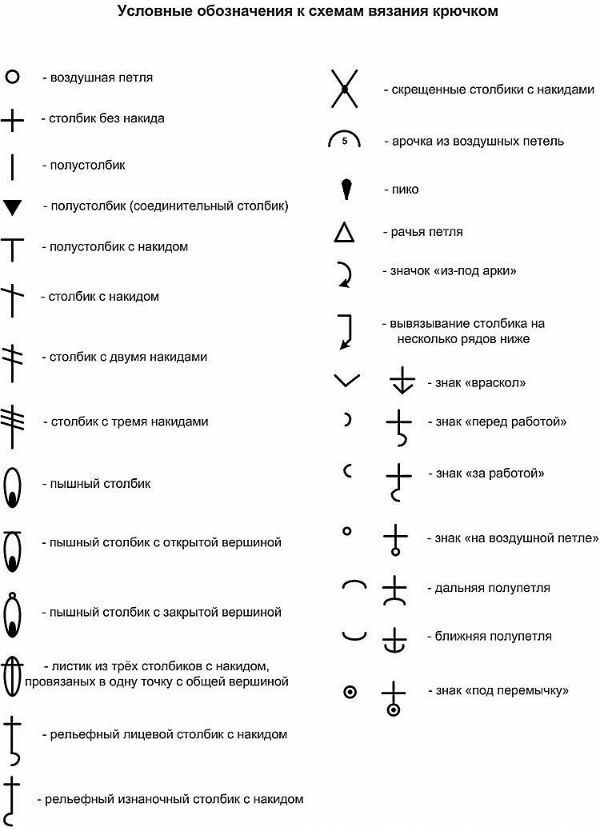
To facilitate the work, general coding conventions in crochet have been derived. Having understood them, you can quickly get into any scheme and understand the progress of work on this or that product.
One of the advantages of these designations is their versatility. They are the same almost everywhere, and it will not be difficult for you to understand the scheme, even if the description for it will be in Chinese.
